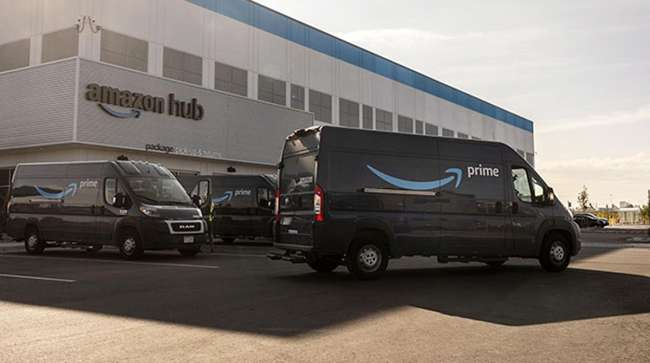Amazon Says Its Carbon Emissions Fell for First Time

[Stay on top of transportation news: Get TTNews in your inbox.]
Amazon.com Inc.’s carbon emissions ticked lower for the first time since the company began reporting the figure, thanks to increased purchases of renewable electricity and a big slowdown in the retailer’s sales growth.
The Seattle-based giant emitted 71.27 million metric tons of carbon dioxide equivalent in 2022, down 0.4% from the previous year, Amazon said in a statement. The company achieved the improvement by using more solar and wind to power its operations and benefited from a decrease in emissions from construction and third-party transportation.
Amazon in recent years has been the biggest corporate buyer of renewable electricity, using power purchase agreements to fund development of new solar and wind farms across the globe. Emissions related to electricity purchases fell 29% last year.
The company has pledged to wipe out or offset its contribution to the greenhouse gas emissions warming the planet by 2040 and invited other companies making similar commitments to join what it calls the Climate Pledge. Emissions are up by about 40% since Amazon set the target in 2019, fueled in part by supercharged sales during the pandemic.
But Amazon says its carbon intensity, a measure of how much the company emits for every dollar of merchandise sold, is down 24% during the same period. Slowing e-commerce growth also helped Amazon cut its carbon emissions for the first time. The company’s revenue grew by 9.4% in 2022, a record low.
The sustainability report comes months after Amazon quietly backed away from the biggest interim goal it had laid out on the road to decarbonizing its logistics business. Called Shipment Zero, the effort was supposed to make half of the company’s shipments carbon-free by 2030, but Amazon retracted it with a brief online statement. Some employees denounced the move during a rally in May outside company headquarters, but Amazon says the interim target “no longer made sense” given the Climate Pledge’s more expansive target.
For years, Amazon lagged behind its peers in emissions reporting. But, amid pressure from employees and shareholder groups, the company has stepped up in recent years, disclosing more about its impact and empowering a sustainability team to invest in technologies aimed at curbing emissions.
Critics say Amazon still undercounts its impact and cheapens its net-zero goal by excluding emissions produced by manufacturers Amazon purchases goods directly as well as from independent merchants who sell the majority of products on its retail site. In its public accounting of so-called Scope 3 emissions, the company only includes the impact of Amazon-branded products, which the company has said account for about 1% of sales.
Want more news? Listen to today's daily briefing above or go here for more info
In their own Scope 3 carbon accounting, Amazon rivals Walmart Inc. and Target Corp. both estimate the impact of all the items sold from their shelves, making their carbon bills seem artificially large compared with Amazon’s. Walmart’s sales were about 22% higher than Amazon’s in 2021. But because Walmart includes a much wider set of products in its carbon accounting, the Bentonville, Ark., company’s Scope 3 emissions were more than twice as large as those at Amazon.
Walmart ranks No. 2 on the TT100 private list.
Amazon has said it excludes products from its vendors to avoid double-counting of emissions tracked and reported by those manufacturers. But beginning in 2024, Amazon says it will update its supply chain standards to require suppliers to share their carbon emissions data with the company and set their own carbon goals.




